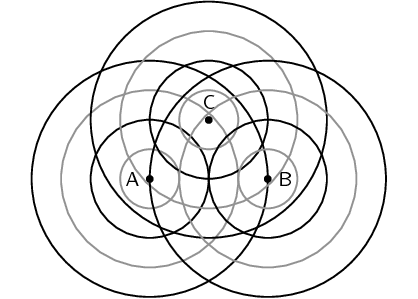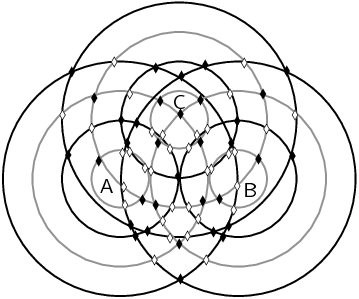Water waves at the entrance to a harbour which has a rock barrier
with a \(\text{3}\) \(\text{m}\) wide opening. The waves have a
wavelength of \(\text{16}\) \(\text{m}\) wavelength approach the
opening straight on.
The angle of diffraction for the water waves is:
\begin{align*}
\sin \theta & = \dfrac{m \lambda}{w} \\
& = \dfrac{\text{3}\text{ m}}{\text{16}\text{ m}} \\
\sin \theta & = \text{0,1875} \\
\theta &= \text{10,81}
\end{align*}
We need to find a slit width that will give a smaller angle of
diffraction for light of \(\text{635}\) \(\text{nm}\):
\begin{align*}
\sin \theta & = \dfrac{m \lambda}{w} \\
\text{0,1875} & = \dfrac{\text{635} \times
\text{10}^{-\text{9}}\text{ m}}{w} \\
w & = \frac{\text{635} \times \text{10}^{-\text{9}}\text{
m}}{\text{0,1875}} \\
&= \text{3,4} \times \text{10}^{-\text{6}}\text{ m}
\end{align*}
The slit must be less than \(\text{3,4} \times
\text{10}^{-\text{6}}\) \(\text{m}\).
Light with a wavelength of \(\text{786} \times
\text{10}^{-\text{9}}\) \(\text{m}\) strikes a single slit of
width \(\text{30} \times \text{10}^{-\text{7}}\) \(\text{m}\).
The angle of diffraction is:
\begin{align*}
\sin \theta & = \dfrac{m \lambda}{w} \\
& = \dfrac{\text{786} \times \text{10}^{-\text{9}}\text{
m}}{\text{30} \times \text{10}^{-\text{7}}\text{ m}} \\
\sin \theta & = \text{0,262} \\
\theta &= \text{15,18}
\end{align*}
We need to find a slit width that will give a smaller angle of
diffraction for light of \(\text{635}\) \(\text{nm}\):
\begin{align*}
\sin \theta & = \dfrac{m \lambda}{w} \\
\text{0,262} & = \dfrac{\text{635} \times
\text{10}^{-\text{9}}\text{ m}}{w} \\
w & = \frac{\text{635} \times \text{10}^{-\text{9}}\text{
m}}{\text{0,262}} \\
&= \text{2,4} \times \text{10}^{-\text{6}}\text{ m}
\end{align*}
The slit must be less than \(\text{2,4} \times
\text{10}^{-\text{6}}\) \(\text{m}\).


